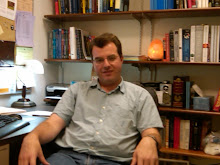I finished the book. It's a good book. I learned a lot of history that I didn't know before, and not just about the specific women profiled in there. I learned more about the origins of NASA and some of the backstory to how decisions were made early in manned spaceflight. For instance, the process for validating space flight trajectories in an era when electronic computers were not yet considered more trustworthy than human calculations.
But it's not really a NASA history. It's a history of black women in STEM. So let's talk about diversity in STEM. What strikes me most is the contrast between the celebration of excellence in this book and the daily conversation on deficits in a modern third-tier university. There's nary a word about failure in this book, but many mentions of women who skipped grades and aced every math class in college. This is not solely a contrast of past and present: The book was written in the 2010's and published in 2016. Notably, the author is not in academia, and so she doesn't feel the same obligations that professors feel. In academia today, we have endless conversations about fail rates in core classes and the implications for diversity. The feeling is that the only way to get diversity is to somehow redeem large numbers of students who are currently floundering.
Now, if the question is whether we should give second chances as a matter of human decency, the answer is of course. If the question is whether some people might even surprise us on a third, fourth, or fifth chance, the answer is that this world is full of surprises. But if the question is whether such surprises are not only be good for the individuals involved but sufficient in number to actually transform the demographics of STEM, the answer is assuredly no. Remember, the floundering students who might surprise us are not exclusively "diverse." I've seen plenty of white boys flounder and fumble even on fourth chances, and if there's a trove of fifth-chance redemptions in the offing then surely there will be more than a few white boys in the "Fifth Time's The Charm" club. Good for them, but it also means that fifth chances or whatever won't move the ratios in ways that people hope.
I have no easy answers for transforming ratios so we finally get enough diversity in STEM--if I did, I would be able to save the world. To the extent that I can guess at answers, they surely involve starting well before kids reach college. And they surely involve fewer desperate attempts to redeem some D students and more cultivation of actual excellence wherever we find it.
The women in this book were not floundering students. They surely had some ups and downs like anyone else, but they were successful anytime they were given a chance. And by "a chance" I don't mean somebody saying "Well, she got a D, but maybe if we offer more encouragement and follow Equitable Best Practices in the remedial algebra course..." I mean that people looked at these women and said "Wow, they do quite well in math. Maybe we should hire them to do math instead of discriminating." If that isn't the essence of much-maligned meritocracy I don't know what is. These women had been succeeding since early in their educations, when they were skipping grades in k-12. They distinguished themselves in college and grad school (if they went to grad school). They earned respect in whatever jobs they held before joining the Langley facility to work on aircraft and later spacecraft. They were meritocratic hires, and in the many cases where the system deviated from meritocracy it worked to their detriment, not to their benefit.
Outside of the highest tiers, American educators are an anti-excellence bunch. Always have been, as Hofstadter showed. We don't know how to handle students who don't need coddling, especially if they come from groups that we frame as victims. We want to be saviors to the wretched of the earth rather than launch crews supporting astronauts on their way to the farthest stars. (Unless we can get photographed alongside the astronaut, and use that photo to get our grant renewed.) We were founded by farmers, who fare best on level ground, not by city-dwellers whose greatest pride has always been towers.
A careful reader of the book might fault me for neglecting the part where the women did receive additional training to fill gaps. However, these "gaps" sprang not from weakness but specialization. They majored in math and then joined engineering teams. They worked on aircraft engineering teams before transitioning to spacecraft. Their additional training was not remediation but professional development. It's utterly normal for professionals to pursue continuing education as they specialize and move into new areas, and it's utterly different from remediation.
I don't know how to produce more Katherine Johnsons and Dorothy Vaughans. If I did I could boost our economy, solve our most pressing technological, medical, and environmental needs, and end racial inequity. Alas, I don't. But I do know that the shift in educational discourse from "Katherine meets and exceeds every challenge, hire her!" to "Well, maybe if we are more progressive and less selective we could promote success..." mirrors the collapse of Dunbar High School. No good will come of it.



No comments:
Post a Comment